
An exciting tour program has been prepared for participants and companions of ISUCRS 2024. Experience the joys of Korean cities through our tour program. Please check the schedule below and apply for participation through the provided link.
| Time | Itinerary #1 D.M.Z. Tour | Photo |
|---|---|---|
| 7:50 | Meeting at hotel. | |
| 8:00 | Move to destination (Freedom Highway) | |
| 9:30 | Tour The 3rd infiltration tunnel & DMZ Exhibition | |
| The third tunnel refers to one of the tunnels dug by North Korea southward under the DMZ. It is located 12km from Munsan and 52km from Seoul and was discovered on October 17, 1978. The tunnel measures 2m wide, 2m high, and over 1,635m long-large enough to accommodate some 30,000 soldiers per hour. It was discovered at a site four kilometers south of Panmunjom in 1978. Will go down and look around on foot. Also, after you come out of tunnel, will go watch short video clip at The DMZ theater demonstrate the history of Korean division and the natural ecosystem around the DMZ. |
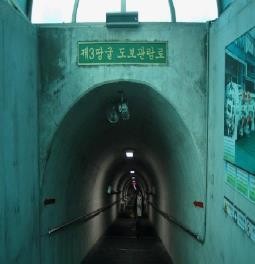
|
|
| 11:00 | Dora Observatory | |
| Dora Observatory, the northernmost observatory on the west side of the Republic of Korea, opened in January 1987 atop Mt. Dora. On clear days, the Gaeseong Industrial Complex, Mt. Songak in Gaeseong, statues of Kim Il Sung, Kijeong-dong in the North, the outskirts of Gaeseong, and Geummamgol (cooperative farm) can all be viewed through the numerous telescope installed on the rooftop. |
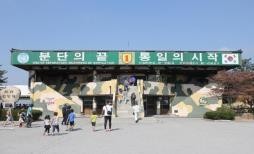
|
|
| 11:30 | Dorasan Train Station (Northernmost Station of Gyeong-ui Railway Line) | |
| 12:00 | Lunch | |
| 13:30 | Imjingak Park |
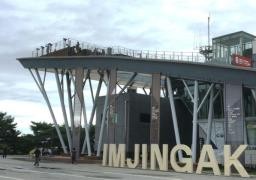
|
| This is constructed for wishing reunification and peace in Korean peninsula. It's constructed to transform Imjingak, a symbol of division and tension, into a symbol of reconciliation, co-prosperity, peace and unification. Various performances, exhibitions, film screenings and festivals are held here throughout the year. | ||
| 13:40 | Pass through Unification bridge (Check Point) | |
| 14:00 | Arrive at Camp Bonifas |
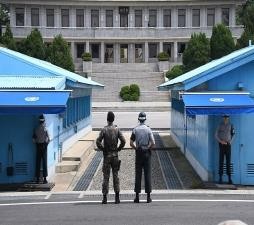
|
| 14:15 | Slide show on JSA | |
| 15:00 | take military bus to JSA area, Freedom House, Military Armistice Commission Building Bridge of no return | |
| 16:30 | Leave for Seoul | |
| 18:00 | Arrive at Hotel |
| Time | Itinerary #2 Hello, Seoul Tour (In the Morning, Time travel in Seoul before 500 years ago) | Photo |
|---|---|---|
| 9:00 | Meeting at hotel | |
| 9:20 | Jogyesa (Temple) | |
| Jogyesa is the main temple of the Jogye Order of Korean Buddhism, located in Jongno-gu, Seoul. It stands as a significant symbol of contemporary and traditional Korean Buddhism, having been founded in 1395 and enduring through various periods of Korean history. Despite its location in the heart of the city, Jogyesa offers a space of peace and rest to its visitors. Within the temple grounds, one can observe beautiful traditional architecture, statues of Buddha, and various artifacts of historical significance. |
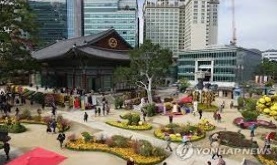
|
|
| 9:50 | The Royal Guard Changing Ceremony | |
| The Changing of the Guard Ceremony is a traditional event that takes place at historical sites such as palaces, symbolizing the handover of responsibilities between guards. This ceremony is characterized by its precise and elaborate process, showcasing the guards' skills in handling weapons and their ceremonial uniforms. |
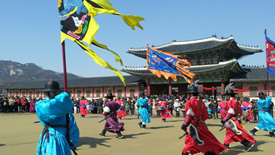
|
|
| 10:15 | Gyeongbok Palace | |
| Gyeongbokgung Palace, located in Seoul, South Korea, is a magnificent example of traditional Korean architecture and a major symbol of Korea's cultural heritage. Constructed in 1395, it served as the main royal palace of the Joseon dynasty. The palace is renowned for its elegant design, spacious courtyards, and beautiful gardens, encapsulating the aesthetic principles of Korean palace construction. |
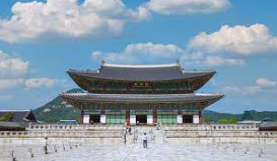
|
|
| 10:50 | The National Folk Museum | |
| The National Folk Museum of Korea, nestled in the heart of Seoul within the grounds of Gyeongbokgung Palace, serves as a cultural beacon, illuminating the daily lives and traditions of Korean people from ancient times to the modern era. |
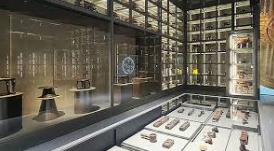
|
|
| 11:30 | Pass by the Prior Presidential Residence (The Blue House) | |
| The Blue House, officially known as Cheong Wa Dae, is the executive office and official residence of the President of South Korea, located in the capital city of Seoul. Nestled against the picturesque backdrop of Bugaksan Mountain, it is distinguished by its striking blue tiles and traditional Korean architectural style, symbolizing both the modern and historical aspects of South Korea. |
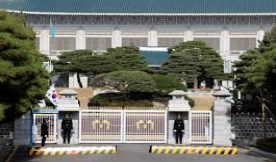
|
|
| 11:50 | RedPine or Ginseng Center | |
| 12:30 | Drop off in Insadong |
| Time | Itinerary #3 Hello, Seoul Tour | Photo |
|---|---|---|
| 9:00 | Meeting at hotel | |
| 9:20 | Bukchon Hanok Village | |
| Bukchon Hanok Village, nestled between Gyeongbokgung Palace, Changdeokgung Palace, and Jongmyo Shrine in Seoul, South Korea, is a picturesque residential area that epitomizes the traditional Korean Hanok architecture. This historic village consists of hundreds of Hanoks, some of which date back to the Joseon Dynasty, offering a glimpse into the country's architectural past amidst the modern urban landscape. |
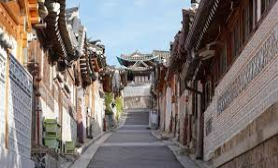
|
|
| 10:10 | Pass by Cheonggyecheon | |
| Cheonggyecheon revitalized area features walking paths, waterfalls, and numerous art installations, creating a tranquil oasis amidst the city's bustling streets. It serves as a popular gathering place for both locals and tourists, offering a unique blend of nature, art, and history in the heart of Seoul. |
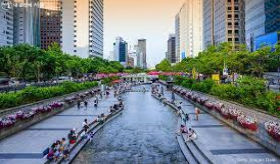
|
|
| 10:30 | RedPine or Ginseng Center | |
| 11:10 | N-Seoul Tower | |
| N Seoul Tower, commonly known as Namsan Tower, stands as a prominent landmark and observation tower located on Namsan Mountain in the heart of Seoul, South Korea. This tower offers panoramic views of the sprawling urban landscape below and serves as a cultural space featuring restaurants, exhibitions, and a variety of entertainment options. |
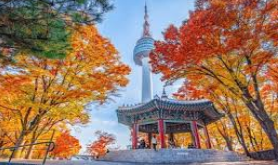
|
|
| 12:30 | Drop-off in Myeongdong |
| Time | Itinerary #4 Hollywood actor's favorite sightseeing locations | Photo |
|---|---|---|
| 13:00 | Meeting at hotel | |
| 13:20 | Changdeok Palace | |
| Changdeokgung Palace, a UNESCO World Heritage site located in Seoul, South Korea, is renowned for its harmonious blend of traditional Korean architecture with the natural environment. Built in the 15th century as a secondary palace for the Joseon dynasty, it is especially famous for its Secret Garden, which is designed with the principles of naturalism and serves as a private retreat for the royal family. |
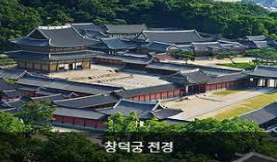
|
|
| 14:40 | Insadong | |
| Insadong, located in the heart of Seoul, South Korea, is a vibrant neighborhood known for its traditional Korean culture, art galleries, antique shops, and a lively street market. This area is a hub for those looking to experience traditional Korean tea houses, purchase unique Korean crafts, and explore the rich heritage of Korea through its art and antiques. Insadong is a must-visit destination for tourists and locals alike, offering a glimpse into Korea's past while being surrounded by the modern city. |
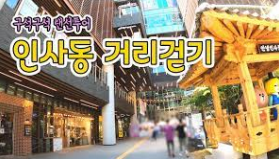
|
|
| 15:50 | RedPine or Ginseng Center | |
| 16:30 | Namdaemun Market | |
| Namdaemun Market, located in Seoul, South Korea, is the country's largest traditional market, offering an extensive range of goods at competitive prices. Established in 1414, it has evolved into a bustling hub where visitors can find everything from clothes and accessories to kitchenware and traditional Korean food. |
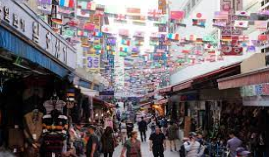
|
|
| 17:30 | Drop-off in Myeongdong |
| Time | Itinerary #6 Seoul Afternoon Food Tour and visit 3 land Marks of Seoul | Photo |
|---|---|---|
| 13:00 | Meeting at hotel | |
| 13:20 | Bukchon Hanok Village | |
| Bukchon Hanok Village, nestled between Gyeongbokgung Palace, Changdeokgung Palace, and Jongmyo Shrine in Seoul, South Korea, is a picturesque residential area that epitomizes the traditional Korean Hanok architecture. This historic village consists of hundreds of Hanoks, some of which date back to the Joseon Dynasty, offering a glimpse into the country's architectural past amidst the modern urban landscape. |

|
|
| 14:40 | RedPine or Ginseng Center | |
| 15:20 | Gwang Jang Traditional Market | |
| Gwangjang Market, established in 1905 in Seoul, South Korea, is one of the oldest and largest traditional markets in the country, renowned for its vintage clothing, textiles, and especially its food section. It's a culinary haven where visitors can indulge in authentic Korean street food, such as bindaetteok (mung bean pancakes), bibimbap, and tteokbokki. |
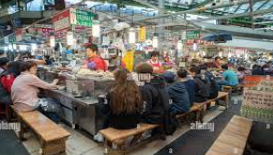
|
|
| 16:30 | N-Seoul Tower | |
| N Seoul Tower, commonly known as Namsan Tower, stands as a prominent landmark and observation tower located on Namsan Mountain in the heart of Seoul, South Korea. This tower offers panoramic views of the sprawling urban landscape below and serves as a cultural space featuring restaurants, exhibitions, and a variety of entertainment options. |

|
|
| 17:30 | Drop-off in Myeongdong |
If you need more information, please contact us below.
E-mail : booking@cosmojin.com
What’s app or Telegram : 82-10-4756-2146
Tel : 82-2-318-0345